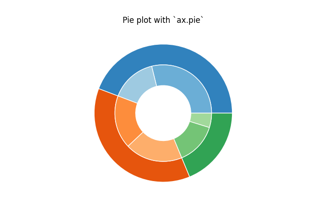matplotlib.colors.ColorSequenceRegistry#
- class matplotlib.colors.ColorSequenceRegistry[source]#
Bases:
MappingContainer for sequences of colors that are known to Matplotlib by name.
The universal registry instance is
matplotlib.color_sequences. There should be no need for users to instantiateColorSequenceRegistrythemselves.Read access uses a dict-like interface mapping names to lists of colors:
import matplotlib as mpl colors = mpl.color_sequences['tab10']
For a list of built in color sequences, see Named color sequences. The returned lists are copies, so that their modification does not change the global definition of the color sequence.
Additional color sequences can be added via
ColorSequenceRegistry.register:mpl.color_sequences.register('rgb', ['r', 'g', 'b'])
- register(name, color_list)[source]#
Register a new color sequence.
The color sequence registry stores a copy of the given color_list, so that future changes to the original list do not affect the registered color sequence. Think of this as the registry taking a snapshot of color_list at registration.
- Parameters:
- namestr
The name for the color sequence.
- color_listlist of color
An iterable returning valid Matplotlib colors when iterating over. Note however that the returned color sequence will always be a list regardless of the input type.

